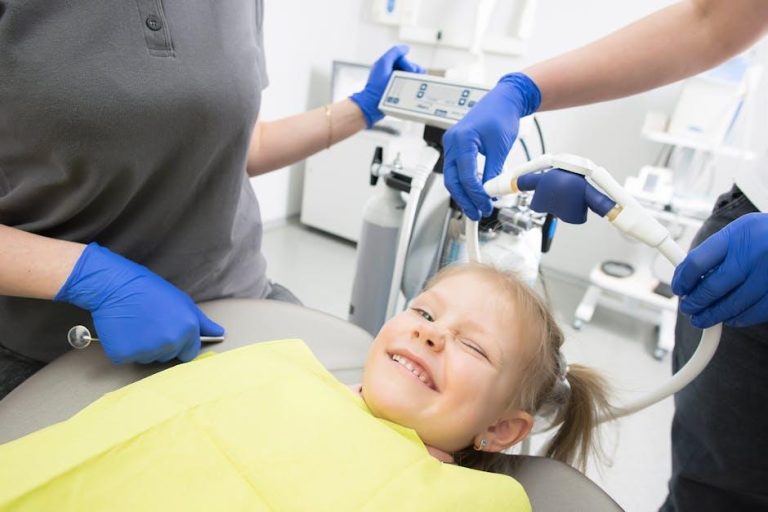1 in 3 Kids Has Dental Problems, Poll Finds – U.S. News & World Report
Dental health is a cornerstone of overall well-being, especially for children. A recent poll highlighted a concerning revelation: 1 in 3 kids in the United States is currently facing dental problems. This alarming statistic shines a spotlight on pediatric oral health challenges that can impact children’s comfort, nutrition, school performance, and self-esteem.
Understanding the Scope: What the Poll Revealed
According to the poll published by U.S. News & World Report, dental issues among children have become widespread. The survey, conducted nationwide, included parents and guardians of children aged 3 to 12 years old. Key findings included:
- 33% of children experienced at least one dental problem in the past year.
- Most common issues: tooth decay (cavities), gum infections, and tooth sensitivity.
- Higher prevalence among children from low-income families and underserved communities.
- Delayed treatments: Due to lack of dental insurance or access to pediatric dentists.
Common Dental Problems Among Children
Dental problems in children are often preventable. Understanding the types of issues that affect kids is the first step in promoting healthier smiles.
| Dental Problem | Description | Potential Impact |
|---|---|---|
| Tooth Decay (Cavities) | Destruction of tooth enamel caused by bacteria and sugar | Pain, infection, difficulty eating, speech problems |
| Gum Disease (Gingivitis) | Inflammation or infection of the gums | Bleeding gums, discomfort, potential tooth loss if untreated |
| Tooth Sensitivity | Discomfort caused by hot, cold, sweet, or acidic stimuli | Avoidance of certain foods, oral pain |
| Malocclusion (Misaligned Teeth) | Improper bite alignment | Difficulty chewing, speech issues, increased decay risk |
Factors Contributing to Dental Problems in Children
Several factors contribute to the rising rate of dental problems among kids. Some of the most critical include:
- Poor Oral Hygiene: Inadequate brushing and flossing habits.
- High Sugar Intake: Frequent consumption of sugary snacks and drinks fuels decay.
- Lack of Access to Care: Many families face financial and geographic barriers to pediatric dental services.
- Limited Awareness: Parents and caregivers may underestimate the importance of early dental visits.
- Use of Bottles or Sippy Cups: Prolonged use, especially with sugary liquids, can cause baby bottle tooth decay.
Why Pediatric Dental Care Matters
Dental health problems go beyond oral discomfort. Childhood dental issues can affect:
- Nutrition and growth due to difficulty eating.
- Developing self-confidence and social interaction.
- Speech development and clarity.
- School attendance and performance.
- Future dental health, including permanent teeth.
Practical Tips for Parents to Improve Children’s Dental Health
As this poll stresses the importance of early intervention, parents and caregivers can take actionable steps to reduce dental problems in kids:
- Start Dental Care Early: Schedule your child’s first dental visit by their first birthday.
- Promote Daily Brushing and Flossing: Encourage brushing twice daily with fluoride toothpaste and flossing as soon as two teeth touch.
- Limit Sugary Foods and Drinks: Replace soda and candy with healthier options such as fruits and water.
- Use Fluoride Treatments: Ask your dentist about fluoride varnish or supplements if your water lacks fluoride.
- Create a Routine: Make oral hygiene a fun, consistent part of the daily routine.
- Protect Teeth During Activities: Use mouthguards during sports to prevent injury.
- Educate and Encourage: Teach kids about the benefits of healthy teeth and gums.
Case Study: Impact of Early Dental Intervention
Emily, a 7-year-old from Denver, was diagnosed with multiple cavities at her routine dental checkup. Before the visit, she suffered from frequent toothaches and avoided eating certain foods. Her parents, previously unaware of appropriate dental care for kids, enrolled her in a pediatric dental program. After six months of treatment and improved home care, Emily’s dental problems resolved. She regained her appetite and happiness, showcasing how early intervention can transform a child’s health and quality of life.
Firsthand Experiences: Parents Share Their Stories
Maria, mother of two, says, “When my son started complaining of tooth pain, I realized we hadn’t been taking his dental health seriously. After visiting the dentist, we learned how to brush properly and cut back on sugary snacks. His smile and mood improved so much!”
Jonathan, a father of three, explains, “Finding affordable dental care was tough, but the local health clinic helped us get preventive care for my kids. Now, my children look forward to their dental visits, and we keep sugar in check at home.”
Summary Table: Key Statistics & Preventive Actions
| Statistic / Fact | Preventive Action |
|---|---|
| 33% of kids have dental issues | Ensure regular dental checkups every 6 months |
| Cavities – most common problem | Limit sugary foods and brush twice daily |
| Children from low-income families affected more | Access community dental programs and insurance options |
| Delay in treatment worsens problems | Early diagnosis and intervention |
Conclusion: Taking Action to Protect Our Kids’ Smiles
The statistic that 1 in 3 kids has dental problems serves as a wake-up call for parents, caregivers, policymakers, and health professionals alike. Pediatric dental health is vital not only for a child’s comfort but also for their overall health and future. Fortunately, dental problems in children are largely preventable with proper education, routine dental care, and community support.
By emphasizing early detection, improving access to dental care, encouraging healthy habits, and fostering awareness, we can help reverse this trend and ensure brighter, healthier smiles for all children across the country.
For more information on pediatric dental health, and resources to support your family, visit reliable sources such as the American Dental Association and CDC Oral Health.


